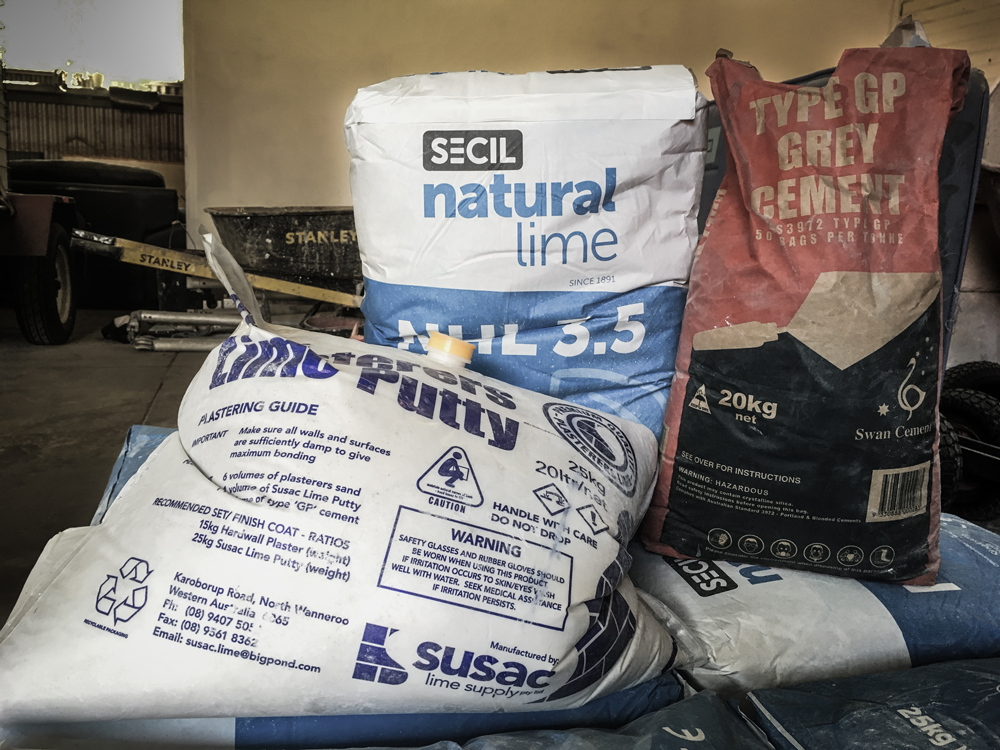Lime Mortar has been used as a binder for stones and brick, and as a plaster or render, for thousands of years. The knowledge of its properties and how to use it has only been lost to current practice in the last 100 years. Almost all buildings constructed before 1900 will have been built using lime.
We are sometimes lead to believe that cement has been around for hundreds of years, implying that Portland cement has been used throughout this time – this is simply not true. Cement is a word we use to mean a binder for aggregate and in this sense can be clay, lime, or Portland cement. Clay has been used for thousands of years, lime has been used for nearly as long, and hydraulic lime, which is often called Roman cement, has also been around since at least the time of the Romans. The properties of lime are significantly different from those of modern cement, which we know as Portland cement. All buildings constructed before the 20th century will almost certainly have been built using lime, because cement was only invented in 1824, by Joseph Aspdin, and did not begin to be used extensively for another 100 years.
Lime mortars and plasters are:
- Permeable. This means that vapour can pass through them at an almost imperceptible level, which is a healthier option for inhabited buildings as it regulates humidity.
- Flexible. Stone or brick laid with lime can move as the earth moves through changing seasons, without cracking the structure or causing instability. There is no need for expansion joints.
- Soft Plasters and mortars should not be harder/stronger than the backing surface to which they are applied.
- Weather proof. Not waterproof, thus protecting the building without sealing it.
- Not susceptible to frost (Not so much of a problem here in WA) they do not freeze as they are not ‘wet’; therefore do not require foundations to be below the frost line.
- Do not attract moisture. They are not a ‘wet’ material, and so don’t need to be covered with a waterproof barrier in order to protect other materials around them.
- Deal with moisture effectively. They can hold excess moisture from the atmosphere in humid conditions e.g. in a shower, without becoming ‘wet’ and then release it slowly back as humidity drops.
- Proven over centuries. The Romans used lime very effectively for many applications including major engineering projects such as bridges, domes, suspended floors and heated floor slabs. The earliest known use of lime is 4000 years ago.
- Reduces greenhouse gas effect. Over its lifetime, due to the cycle of lime changing from limestone to quicklime and back to limestone again, most of the CO2 released during the manufacturing process is re-absorbed during the lifetime of the plaster, thus being close to carbon neutral.
On the other hand, cement is
- Not permeable. Creates a sealed surface that does not allow vapour passage.
- Rigid. Requires expansion joints to allow for natural earth movement without cracking.
- Hard. A great property in the right place but often cement is too strong for the materials that it is used with.
- Waterproof. Completely seals mortar joints or walls.
- Susceptible to frost. Will crack in very cold conditions and therefore if used in foundations, needs to be in deep trenches that make contact with the warmth of the earth to avoid problems associated with frost heave.
- Attracts moisture. Other materials around cement need to be protected from it as it holds water and can cause rot to develop.
- Does not deal with moisture. Can cause condensation problems in bathrooms, kitchens, bedrooms etc. as it does not regulate moisture.
- Does not have a long history. It was invented in the mid-19th century and began to be used extensively from 1930 onwards. We are seeing some major damp and durability problems now, caused by the inappropriate use of cement from 50 or so years ago e.g. collapse of cob walls re-plastered with cement, excessive cracking in period properties after repairs has been carried out using Portland cement instead of the original lime.

